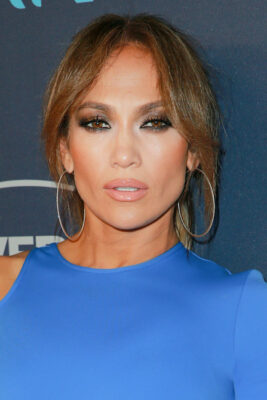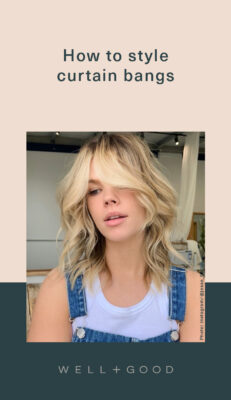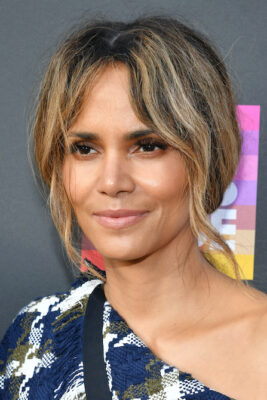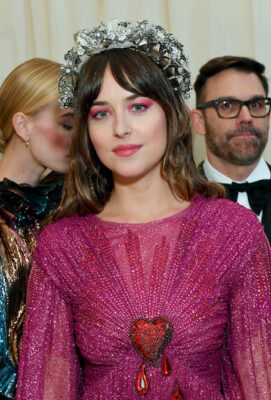Curtain Bangs Are the Least Intimidating Way for First-Timers To Try Fringe
Curtain bangs are longer on the sides and shorter in the middle and function as a sort of frame around your eyes—similar to how curtains work around windows. "They're the least intimidating of the fringe family, and are great for anyone who wants to try something different but isn't ready for the full shebang," says Lisa Satorn, a senior stylist with Nine Zero One Salon. Keep reading for everything you need to know before you trim a set of your own.
- Lisa Satorn, Lisa Satorn is a senior stylist at Nine Zero One Salon in Los Angeles
- Mark Townsend, celebrity hair stylist
Should you get curtain bangs?

According to stylists, if you're looking for an easy-to-manage style, the answer is a resounding yes. "Curtain bangs have this cool, casual, grown-out vibe, thanks to the varying lengths of hair and face-framing pieces," says Mark Townsend, Dove celebrity stylist. "The center pieces are the shortest and should fall around the bridge of the nose, getting gradually longer as you move outward towards the cheekbones."
Curtain bangs have the unique quality of working with all hair types and face shapes and are a great way to change up your look without having to commit to a full, straight-across fringe. "Curtain bangs are the most versatile type of bangs," says Townsend, adding that because they're long on the sides and shorter in the middle, they can be styled in many different ways. "You can hide them away, sweep them to one side, curl the longer pieces—there are lots of different options."

{{post.sponsorText}}
Part of their versatility also comes from the fact that they work with all face shapes and hair textures. "As long as you know your own texture and understand how your hair naturally falls, you can make them work," he says. According to Satorn, curtain bangs tend to be easiest to style on loose, wavy hair, but that doesn't mean that other textures can't try them out as well. "If you have curly hair and want to wear a curly curtain bang, emulsify a styling cream or a leave-in conditioner in the palm of your hands and gently scrunch your bangs in place," she says.

How to style curtain bangs
Curtain bangs work best with a center part, but you may have to re-train your hair so that the bangs fall exactly where you want them to. Satorn suggests starting by blow-drying your hair down and forward so that there isn't a defined part, then blow-drying to the side, then finally flaring up the ends of your bangs and using creaseless clips to set your hair in place.
"Don’t be afraid of a round brush," says Townsend. "Use it vertically and wrap hair away from the face while blow drying." You can also achieve the same look with a curling iron, just be sure to hold it vertically and wrap your hair away from your face to ensure the bangs have movement and frame your face properly.

If you have a cowlick that interferes with your curtain bangs, you'll need to take special care in your styling to work against it. "Start with soaking wet hair and aim your blow dryer straight down," says Townsend. "Use a flat brush, and brush in side-to-side motions while keeping the blow dryer angled downward until the hair is dry." You can also use a reusable mascara spoolie to brush through the cowlick, "because it has enough tension to style the hair in the direction you want," says Townsend.
Another great thing about curtain bangs? You can easily re-style them without having to wash your hair. "Playing with your curtain bangs can make them oily, so do a refresh by just washing your bangs without sacrificing your full blowout," says Satorn. And if you need a little volume refresh, simply spray some dry shampoo at the roots and backcomb your hair for extra lift. "The starch will provide the grit needed to hold the volume in place," says Townsend.
How to care for curtain bangs

Since curtain bangs tend to see a lot of heat styling, it's important to care for them with products that will keep your hair healthy and intact. "I recommend the Dove Breakage Remedy ($21) three-step system for my clients with bangs because it helps strengthen the hair fiber and reduce breakage, which is so, so, so important on hair that is styled often," says Townsend. He's a fan of spraying it on between washes since it will give your hair a boost of strengthening nutrients.
If you have fine- or medium-textured hair, Townsend recommends staying away from wet styling products like mousse or serum on your bangs because they have the tendency to weigh down the hair. "Instead, after blow-drying your bangs, gently spray with a lightweight dry shampoo and tousle with your fingers," he says. "The starch from the dry shampoo prevents the individual strands from sticking together, allowing for a long-lasting, more voluminous look, rather than your bangs falling flat or matting together." As an added bonus, the starch from the dry shampoo also prevents your bangs from absorbing the oils from any skin-care products you use on your face.
How to fake curtain bangs

If you're still not sure about going all-in on curtain bangs, there's an easy way to test the waters. "If you have a lob with angles in the front or face-framing layers, you can fake curtain bangs by taking a flatiron and styling outward in a curved motion at the eyebrow to get that shape and movement of a curtain bang," says Townsend. If you don't have layers, clip-in bangs are also a great option. Either way, you'll be able to see how curtain bangs look before you make it official.
Thinking about cutting your own hair? Check out the video below for a pro-grade tutorial.
Want even more beauty intel from our editors? Join Well+Good's Fine Print Facebook group (and follow us on Instagram) for must-know tips and tricks.
Loading More Posts...